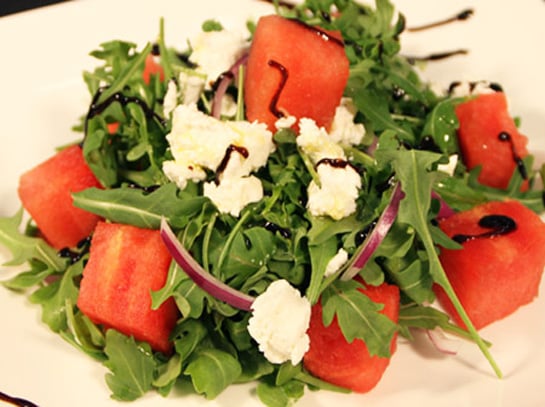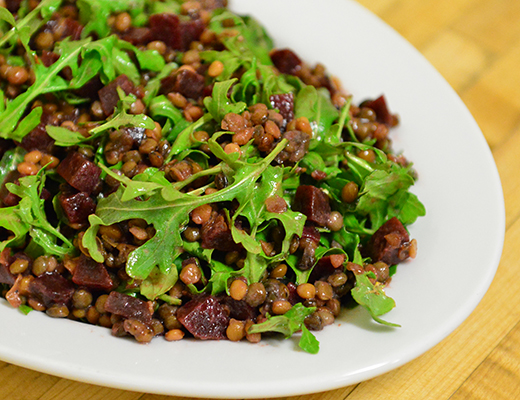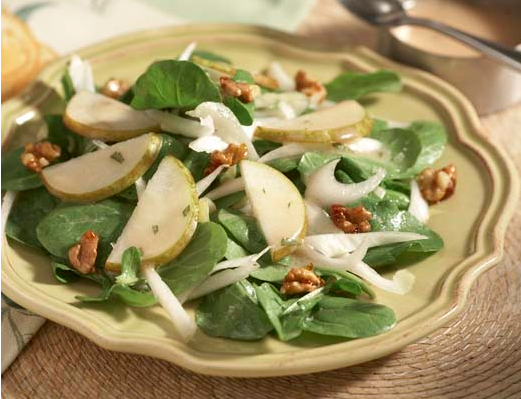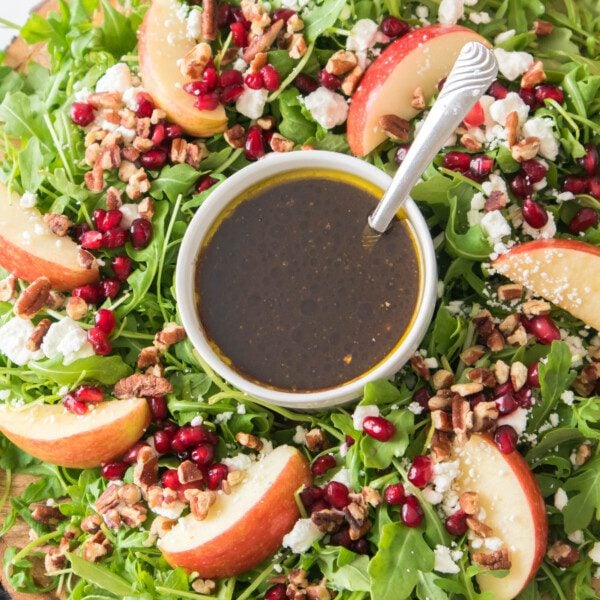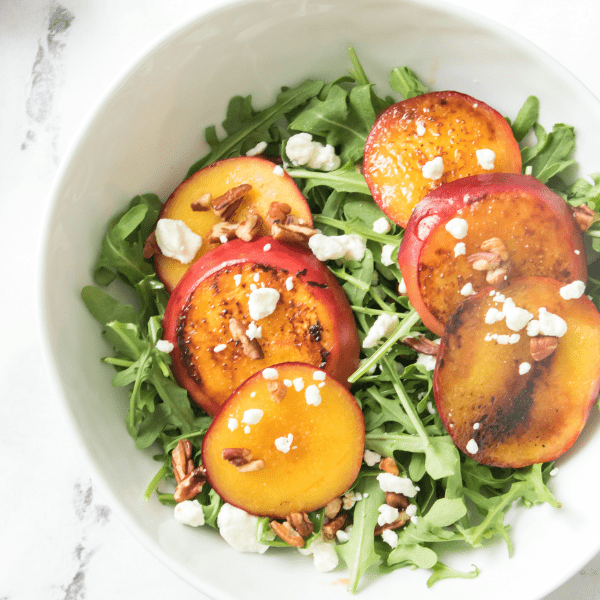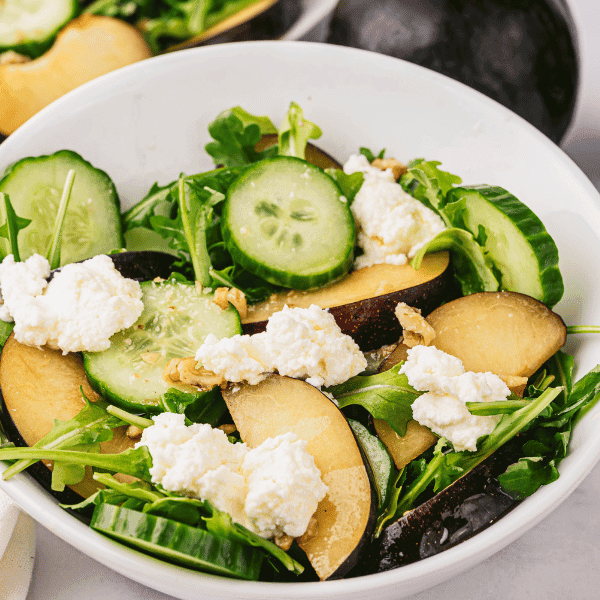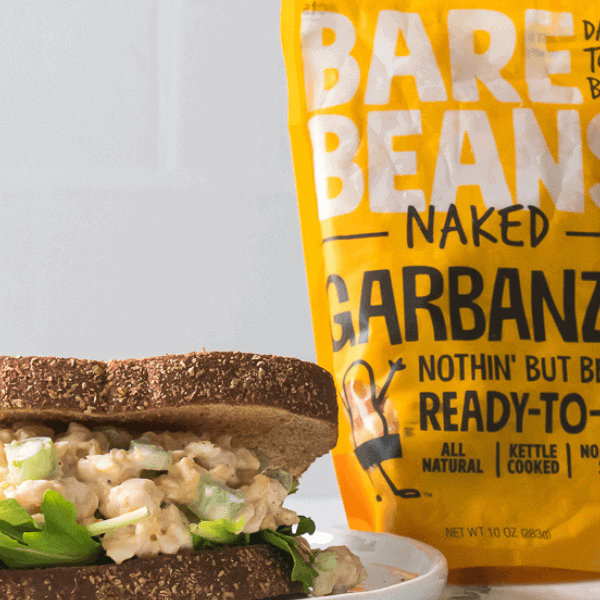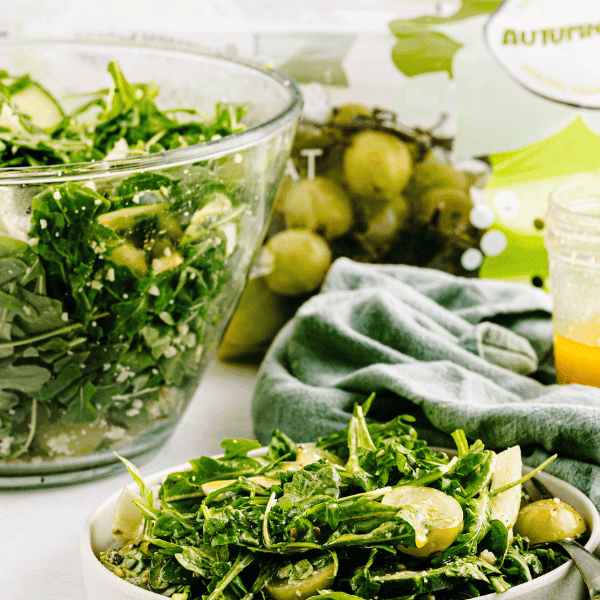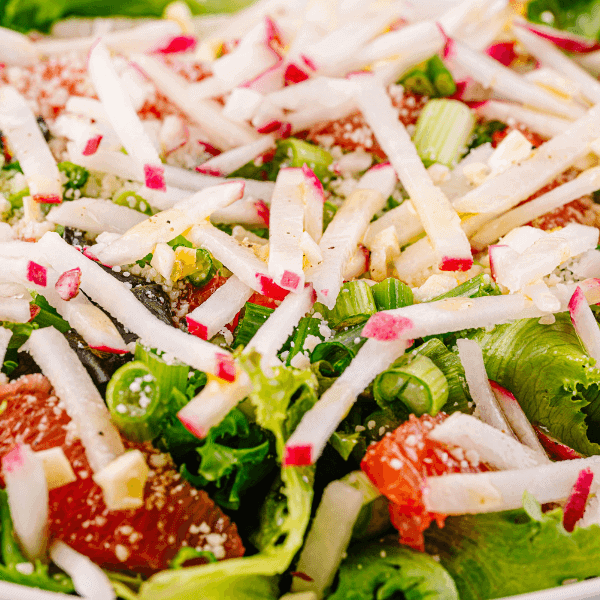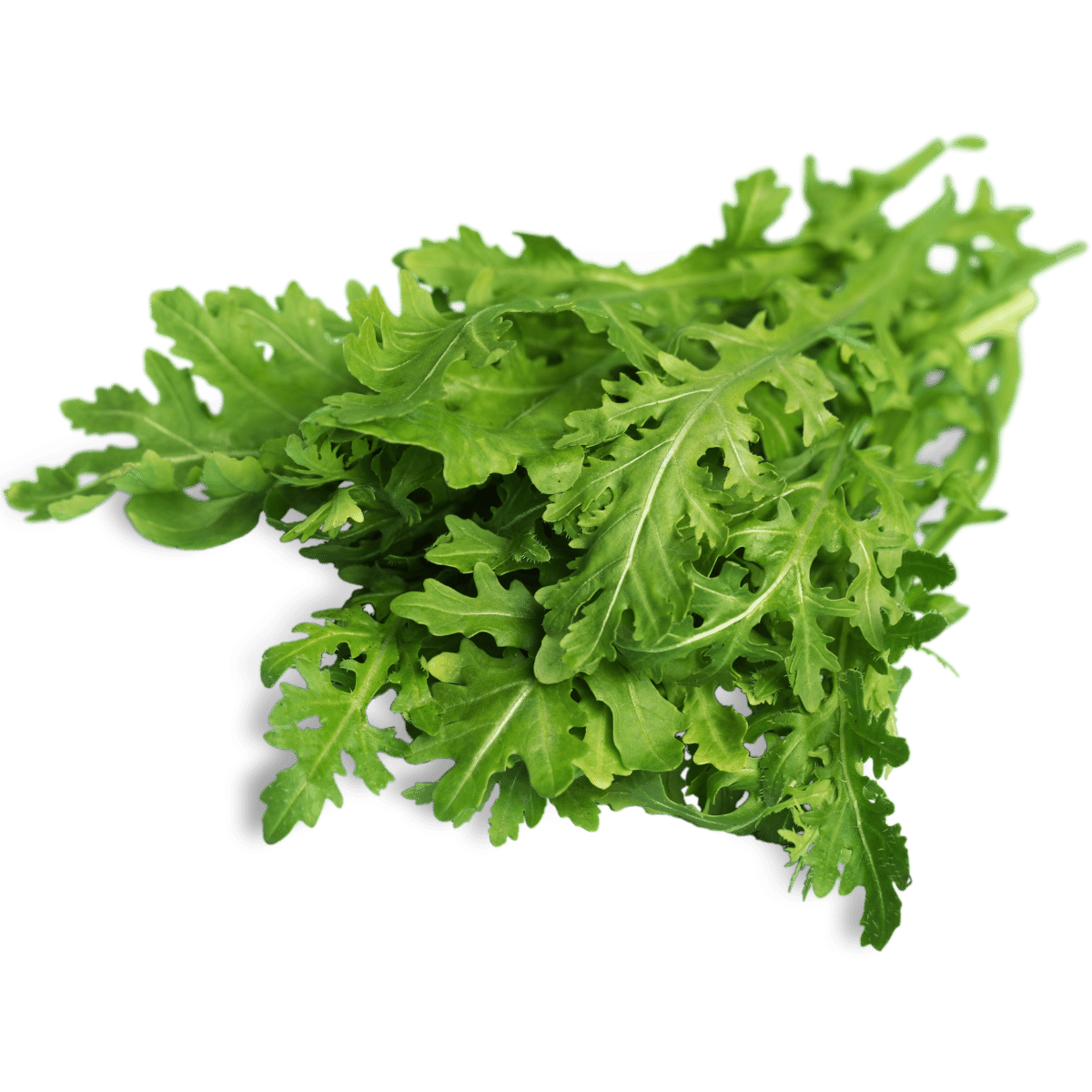
How to Select Arugula
- Select fresh-looking arugula with bright green leaves. Avoid yellow or wilting leaves.
- Aim for arugula leaves that are approximately 3 inches long as these will be the most tender and sweet.
- Avoid packages of arugula with excess water or moisture, as this may indicate that the arugula is close to rotting.
When is Arugula in Season?
Arugula is in peak season during the spring and early summer months, usually from April until June. It’s sweetest when harvested while young and tender. Hotter climates and more mature leaves add a spicy and bitter complexity.
Varieties of Arugula
Arugula comes in several varieties, each of which has its own distinctive taste and texture.
The most common arugula variety is Italian arugula, which has long, deep-green leaves and a mild peppery flavor. This type of arugula is best eaten raw – either tossed into a salad or incorporated into other dishes for an added burst of flavor.
Another variety is wild arugula, which has more serrated edges than Italian arugula and has a stronger, more robust flavor. This type of arugula is great for adding to pizzas or pasta dishes as it can hold its shape better when cooked.
Baby arugula is a popular variety that is much smaller than the other two varieties and has a milder, sweeter taste. Baby arugula is perfect for salads, as it adds color and texture without overwhelming the taste buds.
Arugula Nutrition Facts & Benefits
½ cup of arugula (10g) provides,
- approx 2.5 calories
- 0.1 grams of fat
- 0.3 grams of protein
- 0.4 grams of carbohydrates
- 0.2 grams of natural sugar
- 0.2 grams of fiber
Here are just a few of the many ways that arugula can benefit your health,
Fiber: arugula contains fiber which helps keep your digestive system running smoothly. This in turn may help reduce symptoms related to constipation or other digestive issues.
Calcium: arugula also contains calcium, which helps to maintain healthy bones and teeth.
Potassium: arugula is rich in potassium which may help lower blood pressure.
Folate: argula is rich in folate (folic acid) which has been linked to lowering homocysteine levels.
How to Store Arugula
How To Store Fresh Arugula: Wrap arugula tightly in a plastic bag and store it in the crisper drawer of your refrigerator. Arugula can also be wrapped in a slightly damp paper towel and then placed in a plastic bag in the crisper drawer for 2-5 days. Do not rinse or wash arugula until right before using.
How To Freeze Arugula: For best results, freeze arugula in olive oil. Place minced arugula leaves in a shallow container, like an ice cube tray, and cover with olive oil. Freeze through and then transfer the cubes into a freezer bag and store them for up to a year.
How to Prepare Arugula
Preparing arugula requires minimal effort and the end result is delicious! Here are some tips for prepping arugula for your meal:
Rinse the arugula thoroughly to remove any dirt or debris.
Remove the leaves from the stems, discarding the stems and any wilted arugula leaves.
Arugula can be eaten raw as is, but it also tastes great when lightly dressed with a simple vinaigrette.
If you’d like to cook arugula, heat up a skillet and add some oil or butter. Add arugula leaves to the pan, stirring occasionally for one to two minutes until wilted – arugula cooks quickly so be mindful of not overcooking it!.
Arugula is a versatile ingredient that can enhance any meal. With just these few steps you’ll be able to prepare arugula for whatever dish you have. Serve arugula as a side dish or as part of your main course. It’s delicious with fish, chicken, steak, grains and vegetables.
